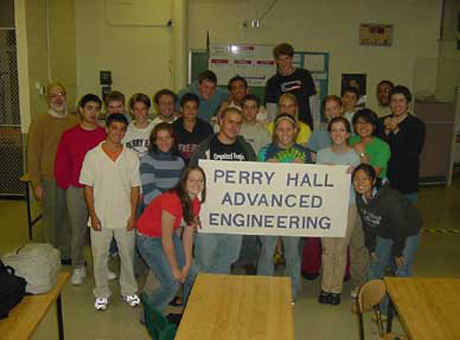Perry Hall High School InvenTeam
Runoff containing industrial and agricultural nutrients has been contaminating the Chesapeake Bay. This abundance of nutrients upsets the balance of the bay's ecosystem, which harms and kills many organisms. The Perry Hall High School InvenTeam decided to create a solar powered water-testing device. The device would monitor the level of nutrients in the Chesapeake Bay and serve as a tool for students to learn about water pollution and the ecosystem. The solar powered water-testing device is designed to float on top of the water. It is powered by five 10 Ahr batteries, which are recharged by four solar panels. This powers three LabPro microprocessors, which collect data from the four sensors. The sensors monitor nitrate, dissolved oxygen, conductivity, and temperature. The Perry Hall High School InvenTeam analyzed the Chesapeake Bay and learned about local sun angles, weather, and tide patterns. The students researched batteries and solar power to determine how many batteries the device would need to function without energy from the sun. They contacted the Department of Natural Resources frequently to collect information about the Bay. Jack Shue, a NASA engineer, taught the students about circuitry and power systems. Their original prototype had one solar panel, no batteries, and eight sensors. After experimenting they discovered design modifications were needed, so they created a prototype with more solar panels and batteries, and fewer sensors. The team planned to display its project in the Baltimore Museum of Industry to raise awareness about the condition of the Chesapeake Bay.


